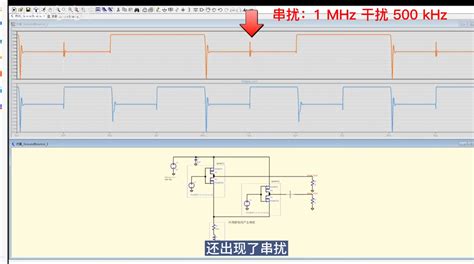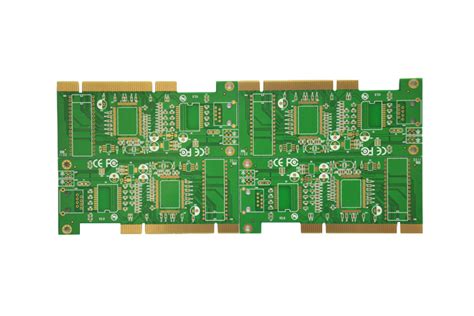Advanced DC Controller PCB Assembly Methods for Modern Applications
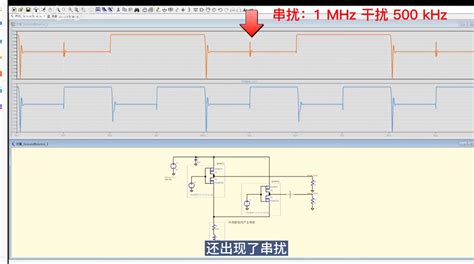
Key Takeaways
Modern PCB assembly techniques for DC controllers prioritize SMT integration to achieve higher component density and electrical efficiency. Surface-mount technology enables precise placement of microcomponents, critical for compact designs in renewable energy inverters and industrial automation systems. Automated PCBA workflows, including pick-and-place robotics and AI-driven optical inspection, reduce human error while accelerating production cycles.
Tip: When designing DC controller boards, consider thermal vias and copper pours early in the layout phase to mitigate heat buildup in high-current applications.
Advanced thermal management strategies, such as embedded heat sinks and thermally conductive substrates, ensure longevity in demanding environments. For renewable energy systems, PCB assembly must account for variable load conditions, requiring robust trace widths and isolation barriers. Industrial-grade PCBA processes often incorporate conformal coatings to protect against contaminants like dust and moisture.
To optimize reliability, leverage simulation tools during the design phase—learn more about DC motor drive circuit design here. Transitioning to automated assembly not only enhances consistency but also supports scalability for high-volume orders, a growing demand in sectors like electric vehicle charging infrastructure. Equally important is selecting materials with low thermal expansion coefficients to prevent solder joint fatigue over time.
SMT Integration in DC Controller PCBs
The adoption of Surface Mount Technology (SMT) has revolutionized DC controller PCB assembly, enabling higher component density and improved electrical performance. By replacing traditional through-hole components with miniaturized SMT devices, manufacturers achieve tighter layouts critical for compact DC controller PCBA designs. This approach optimizes signal integrity by reducing parasitic inductance, a key factor in high-frequency switching applications like motor drives or solar inverters.
Advanced PCB assembly lines now integrate automated pick-and-place systems with vision-guided precision, ensuring accurate positioning of microcontrollers, MOSFETs, and gate drivers. The use of lead-free solder paste and controlled reflow profiles enhances joint reliability under thermal cycling stresses common in industrial environments. For DC controller PCBA, SMT facilitates the incorporation of embedded passives and fine-pitch ICs, reducing board layers while maintaining electromagnetic compatibility.
However, successful SMT implementation requires rigorous thermal management planning during design phases. Components like power transistors generate localized heat, necessitating strategic placement relative to thermal vias or copper pours. This alignment between PCB assembly techniques and thermal design principles directly impacts long-term operational stability, particularly in renewable energy systems where DC controllers face prolonged load variations. As the industry shifts toward Industry 4.0 standards, SMT-driven PCBA processes continue to set benchmarks for precision and scalability in modern DC controller manufacturing.

Automated Assembly for DC Controllers
The integration of automated assembly techniques has revolutionized DC controller PCB assembly, enabling higher precision and scalability for modern industrial and renewable energy applications. By leveraging PCBA-specific robotics, such as high-speed pick-and-place systems and automated optical inspection (AOI), manufacturers achieve consistent placement of surface-mount components like MOSFETs and voltage regulators. This minimizes human error while ensuring alignment with tight tolerances required for thermal management and signal integrity.
| Parameter | Manual Assembly | Automated Assembly |
|---|---|---|
| Component Placement Accuracy | ±200µm | ±25µm |
| Defect Rate | 5-10% | <1% |
| Throughput (units/hour) | 20-50 | 200-500 |
Advanced PCBA workflows now incorporate machine learning algorithms to predict solder joint quality, further enhancing reliability in environments like solar inverters or motor drives. For example, 3-axis motion controllers rely on automated PCB assembly to maintain micron-level precision across thousands of units. Real-time feedback loops in these systems also enable rapid adjustments during wave soldering, reducing rework costs. As industries demand faster production cycles, automated DC controller PCB assembly remains critical for balancing speed, accuracy, and long-term performance.

DC Controller Thermal Management
Effective thermal management in DC controller PCB assembly requires strategic integration of heat dissipation mechanisms and material science innovations. PCBA designs for high-current applications employ thermal vias, copper pours, and advanced substrate materials like aluminum-clad or ceramic-filled laminates to channel heat away from sensitive components. Thermal simulation software now plays a critical role in predicting hotspots during the PCB assembly phase, enabling preemptive layout adjustments such as optimized trace spacing and component placement.
Automated solder paste inspection (SPI) systems ensure consistent thermal interface material application, while selective soldering techniques minimize thermal stress on high-power components like MOSFETs or IGBTs. For long-term reliability, engineers prioritize coefficient of thermal expansion (CTE) matching between layers, reducing mechanical fatigue during thermal cycling. In renewable energy systems, where DC controllers face extreme temperature fluctuations, hybrid cooling solutions—combining passive heatsinks with active airflow designs—are increasingly integrated into PCBA workflows. This multi-layered approach not only enhances operational stability but also aligns with industrial automation demands for fail-safe performance in mission-critical environments.
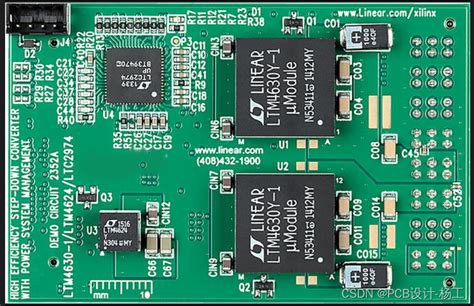
DC Controllers for Renewable Energy
The integration of DC controller PCB assembly into renewable energy systems demands precision engineering to handle fluctuating power inputs and harsh environmental conditions. Solar arrays, wind turbines, and energy storage systems rely on PCBA designs that optimize efficiency and dubility while managing high-current loads. Advanced PCB assembly techniques, such as multilayer stackups with copper-heavy substrates, ensure robust current-carrying capacity, while conformal coatings protect against moisture and corrosion in outdoor installations.
Thermal management becomes critical in these applications, as sustained heat from power electronics can degrade performance. Engineers employ thermal vias, heat sinks integrated into the PCBA layout, and advanced solder alloys to dissipate energy losses effectively. For grid-tied systems, DC controller PCBA designs incorporate galvanic isolation and EMI shielding to maintain signal integrity amidst electromagnetic interference from inverters and transformers.
Transitioning from traditional assembly methods, renewable energy applications increasingly adopt automated optical inspection (AOI) and X-ray testing during PCB assembly to detect microfractures or solder voids that could compromise long-term reliability. These quality assurance steps align with the industry’s shift toward predictive maintenance models, ensuring 25+ year lifespans for solar and wind infrastructure. By balancing power density with environmental resilience, modern PCBA solutions enable renewable energy systems to operate at peak efficiency across diverse climatic zones.
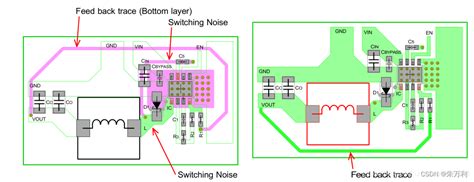
Industrial DC Controller Assembly
Industrial environments demand PCB assembly solutions that prioritize durability, precision, and scalability. For DC controller PCBA, manufacturers increasingly rely on high-speed pick-and-place systems to handle complex component layouts, ensuring consistent placement accuracy for surface-mount devices (SMDs) such as MOSFETs and gate drivers. Automated soldering techniques, including reflow and wave soldering, are critical for maintaining electrical integrity in high-vibration settings, while thermal profiling guarantees solder joint reliability under fluctuating loads.
To address industrial heat dissipation challenges, engineers integrate advanced thermal management strategies, such as copper-filled vias and optimized trace geometries, which reduce thermal resistance in DC controller PCBA. These methods align with industrial demands for continuous operation, particularly in motor drives and power distribution systems. For applications requiring precise airflow control, insights from PWM vs. DC fan speed strategies can inform cooling system designs within the PCB assembly framework.
Additionally, conformal coatings and ruggedized enclosures protect assemblies from contaminants like dust and moisture, extending service life in harsh conditions. Rigorous testing protocols, including automated optical inspection (AOI) and in-circuit testing (ICT), validate performance before deployment. By balancing automated processes with material innovations, industrial DC controller PCBA achieves the robustness required for mission-critical automation and energy infrastructure.
Enhancing DC Controller Reliability
Achieving long-term reliability in DC controller PCB assembly requires a strategic balance of material selection, design precision, and process optimization. Thermal management remains a critical focus, as heat dissipation directly impacts component lifespan. Advanced PCBA techniques incorporate thermally conductive substrates and strategically placed copper pours to minimize hot spots, particularly in high-current applications like renewable energy inverters. For mission-critical systems, conformal coating and underfill materials provide additional protection against moisture, vibration, and chemical exposure.
Automated optical inspection (AOI) systems now integrate machine learning algorithms to detect micro-cracks or solder joint anomalies during PCB assembly, reducing field failure rates by up to 40%. Designers are increasingly adopting failure mode and effects analysis (FMEA) during layout planning to preemptively address potential weak points in power distribution networks. In industrial automation environments, where DC controllers face 24/7 operational stress, redundant circuit layouts and MIL-specified connectors are becoming standard in PCBA workflows. These methodologies not only extend service intervals but also align with the evolving reliability standards for smart grid and electric vehicle charging infrastructures.
Advanced DC Controller PCB Methods
Contemporary PCB assembly techniques for DC controllers emphasize precision and scalability to meet the demands of high-performance applications. By integrating high-density interconnect (HDI) substrates with SMT (surface-mount technology), manufacturers achieve tighter component placement, reducing signal loss while enhancing power efficiency. Automated PCBA workflows now incorporate AI-driven optical inspection systems, which detect micron-level defects in real time, ensuring compliance with stringent industrial standards.
Thermal management remains critical, particularly for DC controllers in renewable energy systems. Advanced methods employ embedded copper-core substrates and thermally conductive adhesives to dissipate heat more effectively, extending component lifespan under continuous load conditions. For industrial automation, dynamic impedance matching techniques optimize power delivery across multi-layer boards, minimizing electromagnetic interference (EMI) in densely packed control units.
Emerging trends like laser-direct structuring (LDS) enable rapid prototyping of complex PCB assembly designs, accelerating time-to-market for custom DC controllers. These methods align with the broader shift toward modular architectures, where PCBA processes integrate programmable logic controllers (PLCs) directly into the board layout. Such innovations not only improve reliability but also support adaptive configurations for evolving application requirements, from smart grid systems to robotic automation platforms.
Modern DC Controller Assembly Tech
Contemporary PCB assembly methods for DC controllers prioritize precision and scalability to meet evolving industrial demands. By integrating surface-mount technology (SMT), manufacturers achieve higher component density while minimizing manual soldering errors. Automated pick-and-place systems, combined with reflow soldering, ensure consistent PCBA quality across high-volume production runs, critical for applications like motor controller assemblies used in industrial robotics.
Advanced thermal management techniques, such as embedding thermally conductive vias or using metal-core substrates, address heat dissipation challenges inherent in compact DC controller designs. For renewable energy systems, PCB assembly workflows now incorporate moisture-resistant conformal coatings and vibration-tolerant solder joints to enhance durability in harsh environments. Real-time inspection tools, including automated optical inspection (AOI), validate solder joint integrity and component alignment during PCBA, reducing post-production failures.
These innovations align with Industry 4.0 standards, enabling seamless integration of DC controllers into IoT-enabled networks. By leveraging modular design principles, engineers can rapidly reconfigure PCB assembly layouts for custom voltage regulation requirements without compromising production timelines. Such adaptability positions modern DC controllers as foundational components in smart grids and automated manufacturing ecosystems.
Conclusion
The evolution of DC controller PCB assembly techniques underscores their critical role in meeting the demands of modern applications, from renewable energy systems to industrial automation. By integrating SMT (surface-mount technology) and automated assembly workflows, manufacturers achieve higher precision and scalability in producing PCBA (printed circuit board assembly) units. These advancements ensure robust thermal management, a key factor in maintaining DC controller reliability under high-load conditions.
As industries prioritize energy efficiency and operational durability, optimized PCB assembly processes now incorporate advanced material selection, such as high-conductivity substrates and thermal interface materials. This focus on precision manufacturing not only enhances performance but also extends the lifespan of DC controllers in harsh environments. For renewable energy applications, where voltage fluctuations are common, the synergy between automated quality testing and thermal optimization in PCBA workflows delivers systems capable of sustaining long-term stability.
Ultimately, the convergence of SMT, automation, and rigorous testing frameworks sets a new benchmark for DC controller PCB assembly. These methodologies ensure that modern electronic systems meet stringent performance criteria while adapting to the evolving needs of global industries.
Frequently Asked Questions
How does SMT integration improve PCB assembly for DC controllers?
Surface-mount technology (SMT) enables precise placement of miniature components, reducing manual errors and enhancing circuit density. This method is critical for PCBA in high-frequency DC controllers, ensuring consistent performance in compact designs.
What thermal management strategies are vital for industrial DC controllers?
Effective thermal optimization involves using copper-core substrates, heat sinks, and strategic component spacing. These techniques prevent overheating in PCB assembly, extending lifespan in demanding environments like industrial automation.
Why are automated processes preferred for DC controller PCBA?
Automated optical inspection (AOI) and pick-and-place systems ensure <1% defect rates while accelerating production. This is essential for renewable energy systems requiring high-volume, reliable PCB assembly.
Can PCBA methods adapt to renewable energy applications?
Yes. Advanced conformal coating and moisture-resistant materials protect boards in solar/wind systems. Custom PCB assembly workflows also integrate fault-tolerant layouts for fluctuating power conditions.
How is reliability tested in modern DC controller assemblies?
Rigorous environmental stress testing (EST) simulates extreme temperatures and vibrations. Combined with burn-in testing, this ensures PCBA durability for mission-critical industrial setups.
Optimize Your DC Controller Design Today
For tailored PCB assembly solutions that meet industrial and renewable energy standards, please click here to consult our engineering team.

